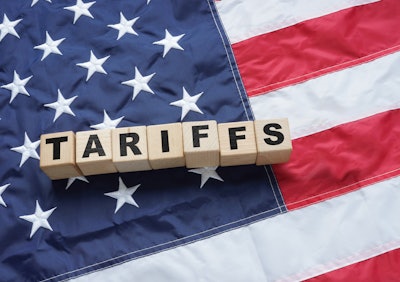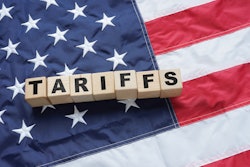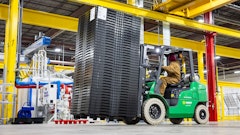
On April 9, President Donald Trump postponed nearly all the “Liberation Day” tariffs, except for the 10% baseline tariff and the highest rate on the list—China. As of April 9, Chinese imports to the United States are subject to a 125% tariff. This is in addition to the 20% tariffs implemented earlier this year, bringing the total tariff on Chinese goods to 145%. This means a product that previously cost a U.S. company $100 to import now costs $245.
The Trump Administration did make an exception for electronics imported from China, which makes up about 25% of all Chinese imports.
The recent tariff changes, particularly the 145% tariff on Chinese imports to the U.S. and the retaliatory 125% tariff from China, will have significant implications for both imports and exports between the two countries, according to research from project44. U.S. companies that rely heavily on Chinese manufacturing may face increased costs and will likely begin exploring alternative sourcing options. Conversely, U.S. exports to China will be hindered by the new tariffs, making it more challenging for U.S. suppliers to compete in the Chinese market.
Key takeaways:
· Imports from China have remained stable up until last week, indicating that, for now, U.S. companies have not significantly altered their ordering strategies, but could be pulling forward orders. However, with the recent 145% tariff hike, companies already positioned to pivot their sourcing strategies appear to be slowing down imports from China. The week of April 7, which is when the new tariffs went into effect, had a sharp decline of 25% of volume compared to this time last year. Industries with more competitive global options will likely see a downward trend in orders from China going forward.
· Unlike imports, U.S. exports to China have decreased, suggesting that China has more flexibility in adjusting its sourcing strategies to avoid U.S. goods. With the new 145% tariff on U.S. imports, this decline in exports is expected to continue.
· Several industries will be significantly impacted by the recent tariff changes due to reliance on either Chinese or U.S. manufacturing, the uniqueness of their products, and the profit margins within the sectors.
· Consumer electronics, including smartphones, computers, and other tech products, are heavily reliant on Chinese manufacturing. While exempt from the additional 125% tariffs, the threat of future tariffs and increased prices for U.S. consumers may incentivize manufacturers to relocate production to countries with lower tariff rates or lower labor costs.
· China is a major supplier of textiles and apparel and produces a wide range of goods that are difficult to manufacture elsewhere due to cost advantages in labor. Companies that rely on Chinese imports to maintain affordable pricing will need to either find alternate sourcing solutions or absorb the costs, potentially impacting their bottom line.
· Agricultural products like soybeans, pork, and beef are a significant part of U.S. exports to China. With the new 145% tariff, it is expected that China will reduce its imports of these products, negatively impacting U.S. farmers and exporters. These industries are already operating on relatively low profit margins, and the additional cost burdens from tariffs may further strain their profitability.
· The chemical and pharmaceutical industries are also vulnerable to tariff increases, particularly those that depend on active pharmaceutical ingredients (APIs) manufactured in China. Similarly, the retaliatory tariffs on medical equipment and pharmaceutical exports from the United States will affect the U.S. pharma industry’s ability to compete in the Chinese market.




















